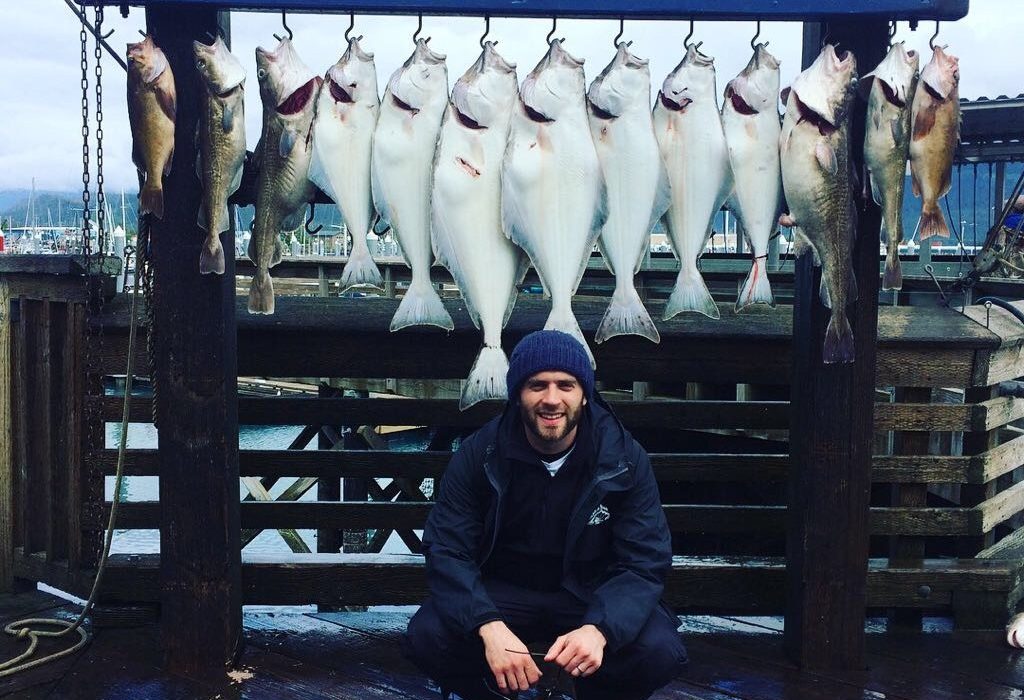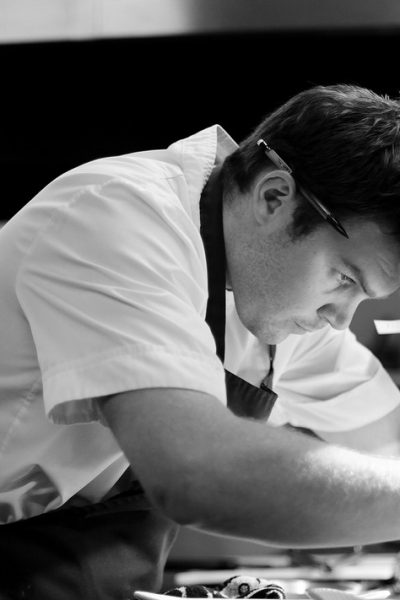Sustainable Fishing in Alaska

For me Alaska is one of those places you’d love to visit but never really have enough of a reason to. So when I was offered the opportunity to join an international trip there to discover the wild seafood and learn about their sustainable approach to fishing, it was a very easy decision for me to make. Of course I was going!
I’d actually never really thought of Alaskan seafood as an option for me at The French since utilising produce from our own coasts has always been my first priority. However with an ever growing drive for sustainability and the future arrangements with Europe looking interesting to say the least, the time has never seemed more apt to explore all the possibilities.
But what is it that Alaska provides? What seafood can they possibly produce that would be of interest to me? Well let’s keep an open mind and see what happens…
Sunday
Taking off from Manchester at 1pm on a Sunday then landing in Alaska 10 hours later at 2pm on the very same day, it was clear that jetlag would be first on the list. But as you fly over snow capped mountains and icy shorelines, the view sells the destination before you even touch the runway.
After being picked up at the airport we took the more scenic route to the hotel in the hope of moose spotting! Unfortunately, we didn’t see any but what I did notice was how small Anchorage is. With a population of approximately 300,000, it houses almost half the total population of the state and Alaska is equivalent to a third of the total landmass of mainland USA (you can tell I was listening to the facts!)
After meeting the other international delegates and the rest of the team from the Alaska Seafood Marketing Institute, we went out for dinner in a restaurant called ‘South’. I have to admit I was pleasantly surprised at the quality of food we experienced on the trip and South was no exception. Starting with some lovely examples of cured Alaskan seafood including scallops, salmon and cod.
Monday
The next day started with a hearty American breakfast followed by a three hour road trip to a town called Seward. Predominantly a fishing town, this is where we would spend the rest of the trip. But before we reached our destination we stopped off at a ‘salmon counting station’. This is where we learned about how the salmon stocks are managed in Alaska, which is fascinating since it’s all done by hand despite the sheer quantity of salmon returning to their birth place to spawn. We were also given a quick introduction to the role of a hatchery which aids the stock levels by lower mortality rates and raising and releasing salmon back into the wild once considered healthy enough to survive in the wild.
So with an icebox full of freshly caught sockeye salmon, we went to the Alaska Institute of Technology (AVTEC) to prepare and cook our catch. It was here that I had my first tasting experience of wild Alaska salmon and what an experience it was! With delegates from China, Japan, Germany and France we cooked up a fusion of different dishes using the vibrant red sockeye salmon as the centrepiece on the plate.
Dinner that night was at a local restaurant called ‘The Cookery’; great cooking in a simple yet atmospheric environment and a stunning plate of locally caught Alaska halibut. What more could I ask for.
Tuesday
On the next day we had an early rise at 5am, but it was well worth it since we were spending the day halibut fishing and after my most memorable meal at The Cookery I was incredibly excited.
We set off on our charter boat down the bay towards the ocean stopping to see how salmon and halibut is fished. We couldn’t have timed this better as we saw a humpback whale in the distance breach and do a back flip, but being too slow off the mark I didn’t catch it on camera. Having reached the edge of the bay, we started fishing. Big plump lines with 3lb weights on dropping 200ft below the surface of the water with bait of octopus and mackerel. It wasn’t the best start for me. My broken rod left me fish-less but it wasn’t long before someone else pulled in the first halibut.
Not before long, the first bouts of sea sickness were kicking in. I seemed to be fairing ok but only with a good bit of concentration and by avoiding the cabin area, which left me feeling like I’d just walked in from a night on the tiles! The decision was made to fish closer to the shore. As luck would have it, I started catching fish left, right and centre pulling in a cod that weighed approximately 7-8kg.
With the day drawing in and dinner time looming, we took our catch to AVTEC for filleting and cooking. We also had a mini demonstration on sablefish also known as black cod or butterfish. Sablefish is exquisite. It’s a deep sea fish with a cod-like texture and an oily richness.
Wednesday
The final day was shellfish day – the day I had been most looking forward to because it meant KING CRAB! After a tour around the salmon processing plant where we learnt all about the canning process, we had the meal of dreams at AVTEC complete with king and dungeness crab legs served with butter. Simple yet sublime. A little later in the afternoon, we had chance to cook-up some of our own dishes using Alaska shellfish, which was brilliant in terms of gleaning ideas and perfecting my technique.
Rounding off my Alaskan experience, we had a riverside bonfire to celebrate summer solstice. I have to say this is something that I’ll never forget – the bright sky, picture perfect backdrop and great company just topped it all off. But as we made our way to the lodge I made sure I was in the company of someone who I thought may be slower at running than me – the bear stories had certainly made me weary!
Thursday
The day of departure had a more relaxed feel to it. After packing up we had one last place to visit in Seward – the sea life centre. To see everything in one place was just eye opening and really showcased the scale of the Alaska seafood industry.
I have to confess to having an amazing trip. Alaska is a beautiful place and despite the scant population it has so much to offer, predominantly the mouth-watering seafood. Seeing the seafood so fresh and wild whilst still being fished and managed in a sustainable way makes me realise what we are missing nowadays from our own supply of what was once, world beating fish. I’ll definitely be seeing how I can factor some of it into my everyday cooking.
By Adam Reid


